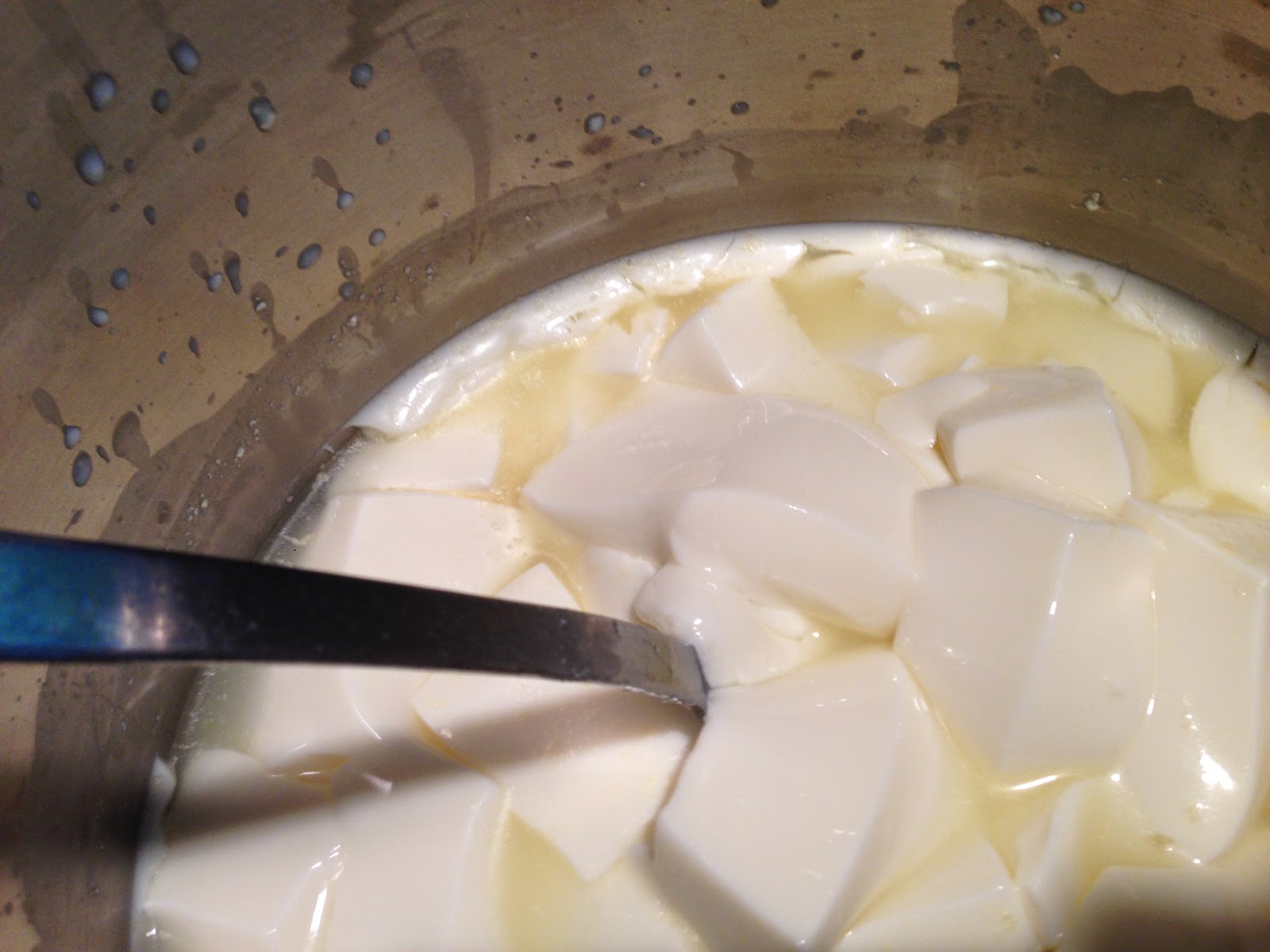Ricotta (which means twice cooked) takes me back to when I was a young boy growing up in Brooklyn NY (East NY). We ate Ricotta all the time. Eating fresh Ricotta was reminiscent of good times and great food. My Mom would buy it fresh from the Italian store all the time. We ate it quite often whether it was in desserts or savory dishes. Something I didn't know until recently was the correct terminology. I don't know when it happened or even if this is correct but I guess Ricotta made from Whey (traditional way of making it) is called Ricottone.
Before I go into the nuts and bolts on how I made this Ricottone I want to discuss the elocution of the word Ricotta. Why would I want to discuss such a thing on my blog? Well for one thing it's my blog. In search of my cheesy reminiscent Ricotta of my childhood I came across some online chatter that ruffled my feathers and frankly pissed me off. There seemed to be a great deal of discussion on the right and wrong way to say certain words. Most pertained to Italian words for foods. The chatter focussed on the Jersey/New York way of talking. The blogs and articles I read were positive, funny and at other times extremely judgy. Some approached this subject linguistically and felt the East Coast way of talking was improper and showed a lack of education and understanding. That kind of talk irritated me. Of course a few choice words popped into my head but I will refrain from sharing. So, I say Tomato you say To-may-to in other words who cares. I grew up in Brooklyn and we say things a little different liken to the rest of the world. If you ever feel the need to correct someone's phonetics you need to stop right now because you are acting like an ASS!!
Yea, yea I am venting a bit. Just one of my pet peeves. When I moved out to the Northwest I quickly learned that my pronunciation of certain words was different than the average Washingtonian. According to Websters Dictionary Ricotta is pronounced Ri-cot-ta (Re-caught-uh). The way I say Ricotta is; with a rolling "Rrrrrr" I say "Ree-gawt" or "Ree-gawta". And if you ask me my pronunciation of Ricotta sounds damn cool. When I first arrived in WA and not knowing any different I would use my special Brooklyn way of talking and undoubtedly and without any clue what was happening I would get this questionable long stare. They would would break the long silence and stare with "What did you just say?" As if I was speaking a different a language. To my knowledge they were not being rude but sincerely did not know what I was saying. I was unaware that there were other ways to say the same word. Here are some common words I used as a kid... ..Mozzarella = Moot-za-dell, Prosciutto = Pro-shoot, Capicola = Gabagol, Cannoli = Ga-nol-lee and finally Macaroni = Mac-cher-roni. At the end of the day it really does not matter.
You're looking at 6 Gallons of Milk Whey. The Whey is the byproduct of my Cheesy quest to make Beer Cheese. Ricotta means recooked which I will do to make Ricotta aka Ricottone. Long story short, after most of the protein is extracted from the milk (mostly casein) in the form of curds you are left with Whey which is mostly albumin.
The remaining whey needs additional fermentation (more acidity) in order for us to harvest the additional proteins we know as Ricotta. You can accomplish this naturally by introducing a culture, or waiting an unknown amount of time for the ripening to take place or introduce an acid such as Citric Acid.
With the lower PH and high temps the protein denatures and causes a fine curd to form on top which can be scooped up and placed in a mesh, or cheese cloth or mold like I did.
So here is what I did. Heat the milk to 160 F. This kills any remaining rennet which prevents early coagulation. Optional- At this point add 5% - 25% or of milk or cream to improve richness and yield. I have come across recipes that uses 2 parts whey and 1 part cream or milk. Keep heating to 170 F and add 1/2 tsp 2 tsp of salt per gallon of liquid (.25% of weight). I used 1 tsp per gallon and it tasted great. Raise temp of whey to 185 F and when you start seeing curds float at the top add citric acid. Mix a 1/2 tsp of citric acid per gallon of water with distilled water and add to vat and whisk vigorously for 15-20 seconds. You will know if you added to much citric acid if curds sink to bottom. As the curds start to form use the ladle to move curds gently from the sides to the center. The curds will start to stick together to form a solid mass. The color hopefully will turn green and the curds will float. If they don't sink it means you got it right. Let the curds rest in the whey for 10-15 minutes which helps ensure better quality Ricotta. Gently ladle curds into draining forms. Now if you want a light version of Ricotta drain less and of course if you want a denser version drain longer.







































.jpg)











.jpg)